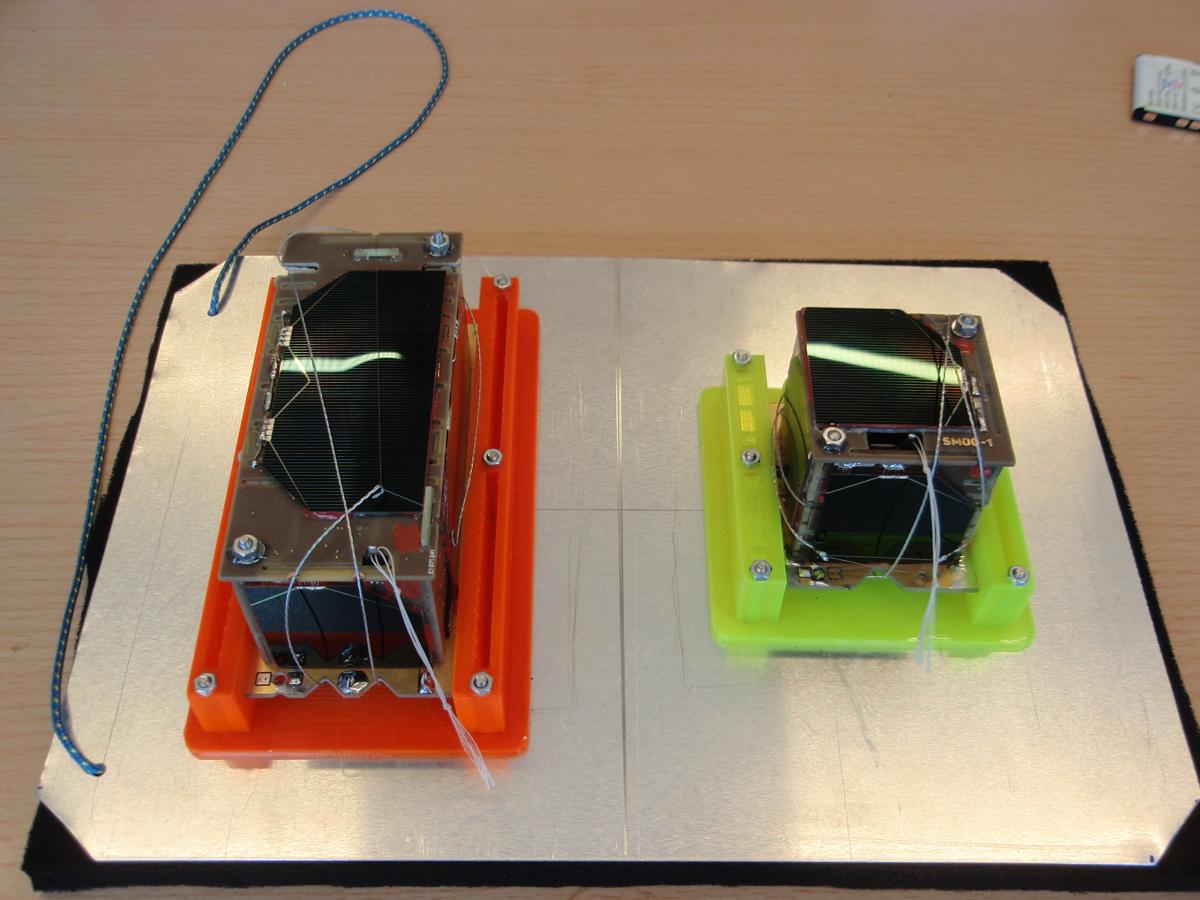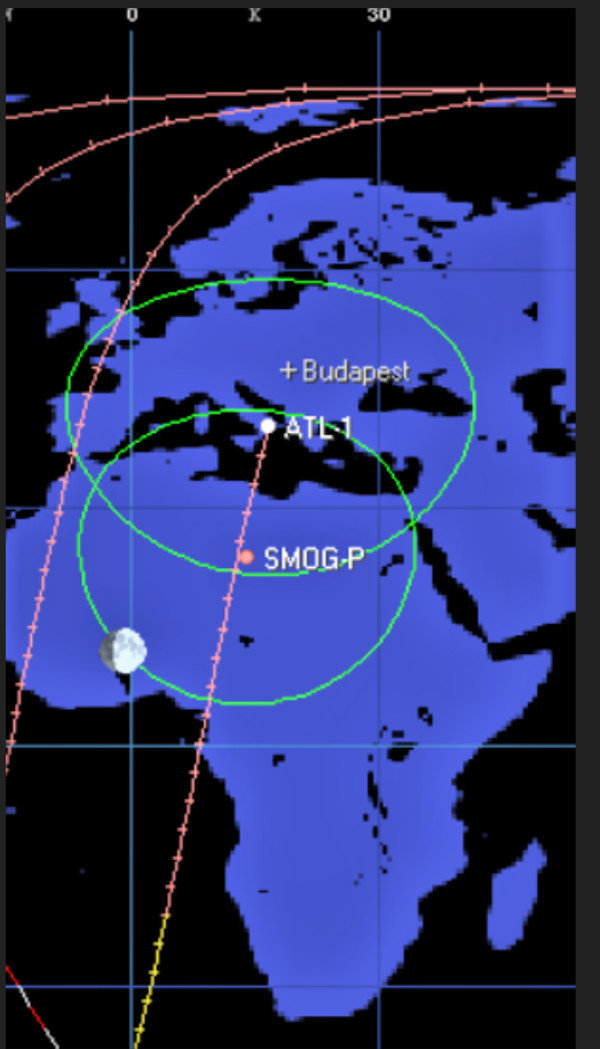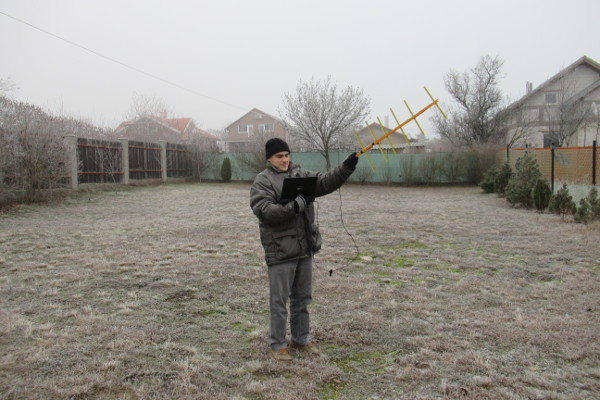News feed
‘BME’s picosatellite has been performing beyond expectations in space for a month’
2020. 01. 16.Experts can access SMOG-P from Hungary 4 to 5 times a day, for periods of 40 to 50 minutes.
”Our development, launched on December 2019, is in orbit and remains active”, András Gschwindt, honorary associate professor of the Department of Broadband Infocommunications and Electromagnetic Theory at the Faculty of Electrical Engineering and Informatics (VIK) of BME and the head of the SMOG project told bme.hu. The Electron rocket of Rocket Lab, an American company, was launched from the Mahia Peninsula in New Zealand carrying six picosatellites including two Hungarian ones. SMOG-P is the world”s first 5 cubic cm-sized, functional space device while ATL-1, the first Hungarian private satellite, which was created with intellectual support from the university, is also transmitting signals. (Editor note: the event was covered by bme.hu earlier)

Elhelyezésre várva a SMOG-P (jobbra) és ATL-1 (balra) műholdak
|
SMOG-P is the first Hungarian 1-PocketQube-sized (5x5x5cm) satellite financed by sponsors and entirely developed at the Budapest University of Technology and Economics under the guidance of the university”s professors and with the active participation of its students as part of their academic programme. The project was coordinated by the professors of the Department of Broadband Infocommunications and Electromagnetic Theory at the Faculty of Electrical Engineering and Informatics (VIK). Students from the Faculty of Mechanical Engineering (GPK) and external experts also actively participated in the project. The costs of the launch were financed jointly by the Faculty of Electrical Engineering and Informatics (VIK) and the Ministry of Foreign Affairs and Trade (KKM). The name of the satellite refers to the word ”electrosmog” and the letter P stands for ”precursor” since the mission of SMOG-P is to analyse the electrosmog emitted into space. ATL-1 is the first Hungarian 2-PocketQube-sized (5x5x10cm) satellite, developed entirely through private enterprise with the involvement of the SMOG team. It is designed to test thermal insulation materials for batteries in zero gravity and under extreme weather conditions. |
András Gschwindt explained that, due to their different size, the two satellites decelerate at a different rate, which also causes a variation in their position: SMOG-P is in the lead, followed by, with a delay of over 4 minutes and a distance of 1800 km, ATL-1. ”At its deployment, SMOG-P was spinning at a high speed, rotating at about 40 times per minute, which slowed to 10 after one month. Because of its size, ATL-1 was less active, starting with four spins per minute, which has slowed to around two by now. Because they are orbiting at a low altitude, neither space device is equipped with technology to increase deceleration and reduce spinning”, the project leader said sharing details on the satellites and adding that they are expected to enter the more dense parts of the atmosphere in May or June 2020 where they will burn up.

The position of SMOG-P and ATL-1 one month after their deployment
In reference to the developments of their competitors, the honorary associate professor said that two other 1-PocketQubes, the TRSI-Sat and the Fossa-Sat were aboard the same deployer with the Hungarian picosatellites but neither of them have transmitted signals so far. The same rocket, but a different unit, was also carrying the 5x5x15 cm sized NOOR-1A and NOOR-1B, which are also silent. ”The current data further confirm the failure rate of the hundreds of small satellites built by universities or small companies. In general, two-thirds of them fail to transmit,” András Gschwindt added.
”It shows that our preparation was sufficient. Two active control stations were set up at BME and a third one in Érd to receive the signals of our satellites. All of them are capable of unmanned operation and are accessible via the internet. Unfortunately, the rotator unit of the three-meter-tall antenna at BME is broken so we are inviting one or more sponsors to help us purchase a new, highly reliable device,” András Gschwindt explained highlighting the special role Érd has achieved as a result. He also added that: ”the most critical component was the software enabling signal reception and data collection from beyond our range. However, this programme was not completed in time; we could not run the necessary reliability tests. We thank everybody who is passionately trying to help us as we speak to fill this gap. We have learnt precious lessons from these problems.”

Levente Dudás, the lead constructor of SMOG-P, receiving the signals from SMOG-P ”in the field”, at his own station in Érd
”It is important to note that SMOG-P was essentially designed to gain experience and new information in the fields of hardware and software. It is clear now that it was very much in demand. The fact that it became a world first is a bonus. The American professor, Robert Twiggs, who first proposed the idea of 5 cm picosatellites, congratulated us on our success and asked us to keep him posted. The most critical parts, the power supply, thermal balance and the opening of the antennas worked as planned. ATL-1 is also a valuable source of new information,” stressed the project leader adding that this was the first time that the outstanding support of the Faculty of Electrical Engineering and Informatics (VIK) of BME had included cash funds as well: ”in addition to financing the complete cost of the launches, we received a grant of HUF 5 million for future developments”. ”These satellites were designed and built as part of the academic programme where teachers and students often learnt together. This is a great starting point from which to introduce space engineer training. We must not forget our external sponsors who offered an extraordinary contribution through knowledge and funds and without whom we could not celebrate all these successes,” András Gschwindt said in conclusion.
– GI –
Photo: BME Faculty of Electrical Engineering and Informatics
